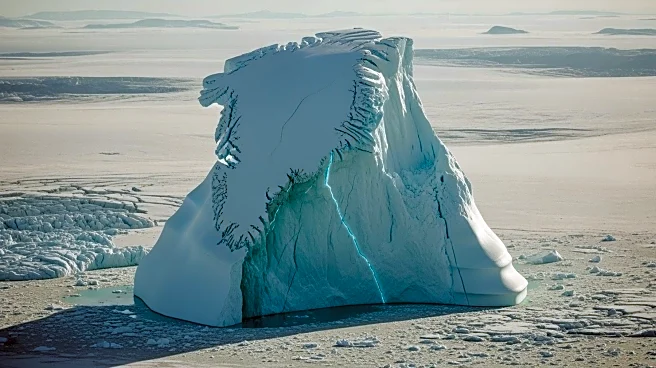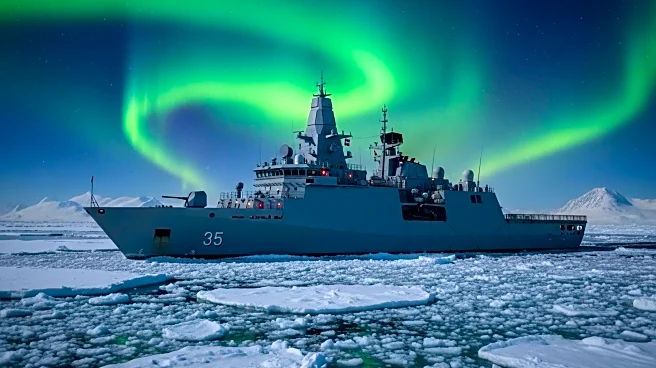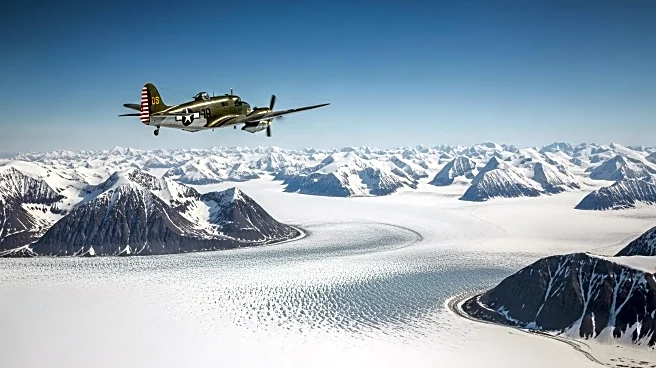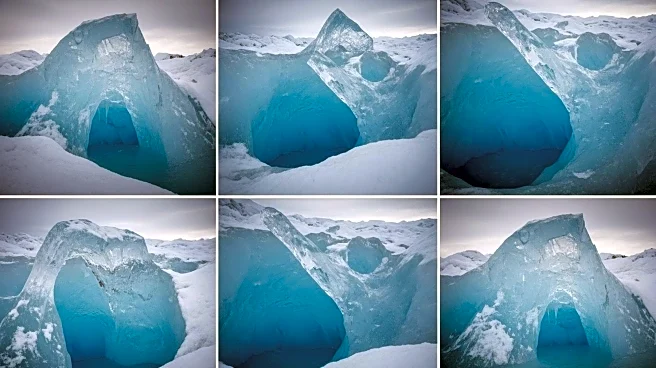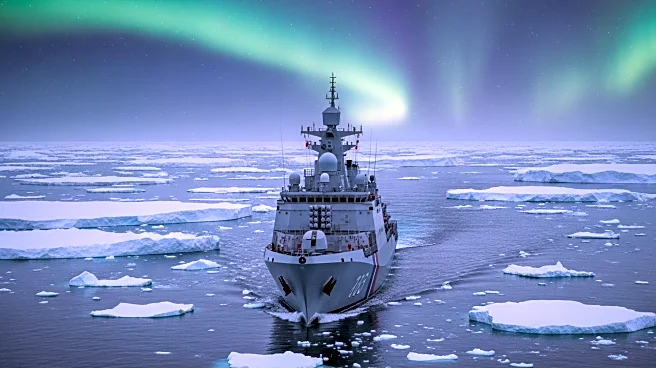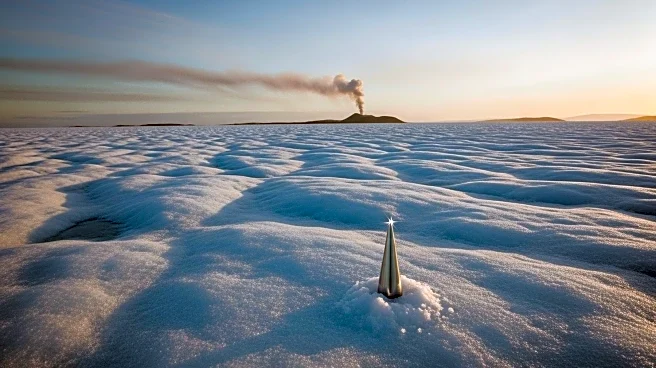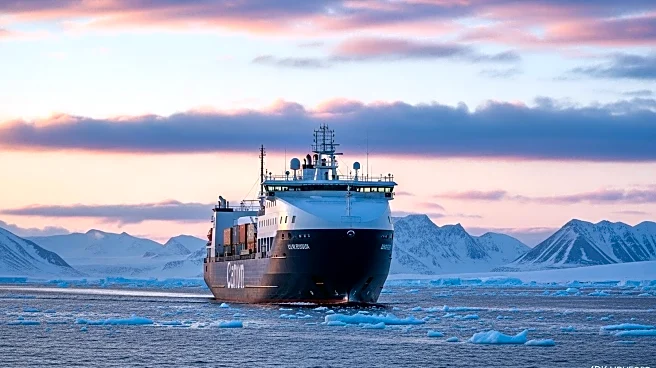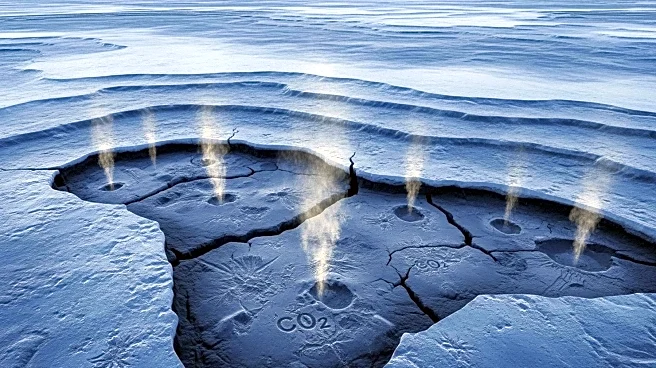What's Happening?
Recent satellite data analyzed by geoscientists from the Technical University of Denmark has revealed that Greenland is experiencing significant geological changes. The melting of the Greenlandic ice sheet
is reducing pressure on the subsurface, causing movements in the bedrock and tectonic plates. This has resulted in Greenland drifting northwest by about two centimeters each year over the past two decades. The island is both expanding and contracting, with some regions stretching out while others are being compressed. This discovery challenges previous assumptions that Greenland was primarily being stretched due to ice melting dynamics. The study utilized measurements from 58 GPS stations to detail elevation changes and shifts in the island's position, marking the first time such movements have been described in detail.
Why It's Important?
Understanding Greenland's geological movements is crucial for geoscience, surveying, and navigation, as even fixed reference points are shifting. These changes have broader implications for climate change research, as they highlight the dynamic nature of landmasses affected by melting ice sheets. The findings underscore the importance of monitoring and modeling land movements to anticipate future shifts and their potential impact on global sea levels and climate patterns. The study provides valuable insights into the effects of accelerating climate change in the Arctic, which could influence policy decisions and scientific research related to climate adaptation and mitigation strategies.
What's Next?
The study's findings may prompt further research into the long-term effects of tectonic movements on Greenland and other regions affected by climate change. Scientists and policymakers might explore strategies to address the implications of these shifts, particularly in terms of navigation and surveying accuracy. Additionally, the research could lead to increased collaboration between geoscientists and climate experts to develop comprehensive models that predict future landmass movements and their impact on global climate systems.
Beyond the Headlines
The discovery of Greenland's shrinking due to tectonic movements raises ethical and environmental questions about the impact of human-induced climate change on natural landscapes. It highlights the need for sustainable practices to mitigate the effects of climate change and protect vulnerable regions. The study also emphasizes the importance of international cooperation in addressing global environmental challenges, as the consequences of Greenland's geological changes extend beyond its borders.
